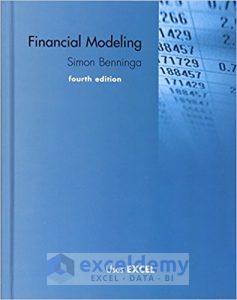Where do financial modelers work?
The world of finance can be a very complex place that at times, it is quite tricky to navigate. For instance, millions of financial transactions are processed daily. The world of stocks, investments, portfolios, and equities is dynamic and it involves vast quantities of data.
Have you ever wondered how the behavior of stocks in certain niche industries are forecasted? Or the direction the stock market will take? Is it going to be a bull market in an era where prices are rising for a number of reasons but there is general optimism? Or is it going to be a bear market period, where securities are characterized by falling prices and pessimism abounds?
How do statisticians, financial analysts, economists, accountants, and others handle this complex, dynamic environment and are able to make accurate predictions and forecasts concerning certain patterns and trends?
Well, the answer to that question is that they create models. Financial modeling involves analyzing a certain financial dataset and making a representation of that dataset. It is about trying to explain the data patterns/trends through a simplified model that reduces the complexity of the real-world situation while taking into account all the variables.
Usually, the model is inclusive of calculations and subscribes to a certain financial theory, depending on the model at hand. Different models are based on different financial theories. Besides other functions, the purpose of the model is to make accurate predictions and forecasts, taking into account the variables that are involved. Financial models are utilized in many different industries and for diverse purposes.
Read More: Best 40 Excel Books for Data Analysis & Business Modeling
Excel – The Most Used Tool for Financial Modelers
Excel is one of the most useful tools for a financial analyst and allows one to create financial and analytical models. Excel is fairly ubiquitous throughout the finance world, so you can be assured that if you send your spreadsheets to a Wall Street banker or an economics professor at your university, they’ll be able to comprehend your data.
Are you ready to dive into the world of using Excel for financial modeling? Look no further. Here at ExcelDemy, we have put together a list of books to assist you with navigating through the world of Excel and financial modeling.
Best Books on Financial Modelling Using Excel

Best Book on Financial Modeling with Excel (if you want to buy just one book on Financial Modeling, choose this one)
- Financial Modeling (MIT Press)
by Simon Benninga (if you want to choose just one book from this list, choose this one. Simon Benninga is known as the father of financial modeling)
- Financial Modelling in Practice: A Concise Guide for Intermediate and Advanced Level
by Michael Rees
- Mastering Financial Modeling: A Professional’s Guide to Building Financial Models in Excel
by Eric Soubeiga
- Financial Modeling for Business Owners and Entrepreneurs: Developing Excel Models to Raise Capital, Increase Cash Flow, Improve Operations, Plan Projects, and Make Decisions
by Tom Y. Sawyer
- Next Generation Excel: Modeling In Excel For Analysts And MBAs (For MS Windows And Mac OS)
by Isaac Gottlieb
- Financial Modeling and Valuation: A Practical Guide to Investment Banking and Private Equity
by Paul Pignataro
Financial Modelling with Excel & VBA
- Financial Analysis and Modeling Using Excel and VBA
by Chandan Sengupta
I recommend these books. You’ll not regret it. These books are hand-picked by me and some of the books I personally use for my works.
Do you know any other books that should be on my list?
Drop the book name in the comment box.



Stock In, Out, Sale with report data base sheet